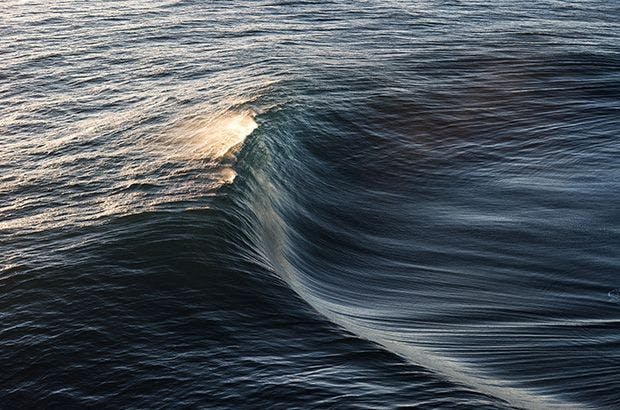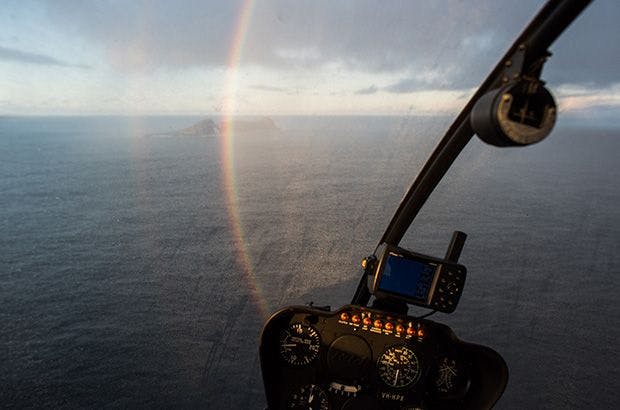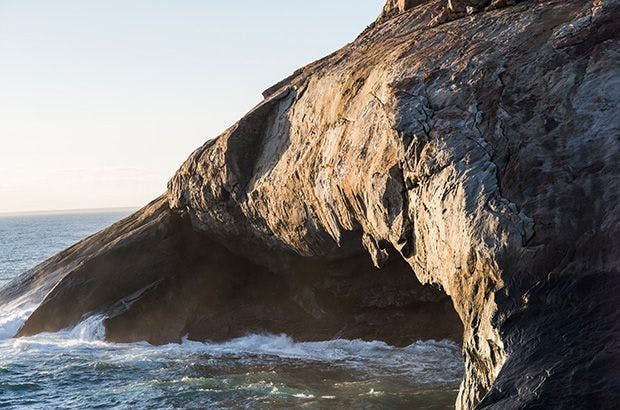Interviews, Surf Movies, Surf PhotographyMining Gold: The Chris Gurney Interview

When Mining Gold appeared on our radar at the start of this month we, like much of the surfing world, were mesmerized. Having digested this beautiful tribute to the power that unfolds off the remote south coast of Western Australia, Surf Simply got in touch with Perth-based photographer and the project’s producer and director, Chris Gurney.
Your Mining Gold short is a love letter to heavy slabs. How long did it take you to complete, from conception to release?
I had the idea of shooting these spots from a heli a few years ago, did some research and found out that the nearest pilot had moved his business to a different part of the country. After that I thought it would never happen. I lucked into working with Specialist Helicopters on a separate job and they joined this project as co-producers and made the logistics possible. We shot the footage on June 1st and released the film on July 7th.
You live in WA and those waves are in WA, but it is an enormous state and those spots certainly aren’t just “down the road”. What logistical challenges did you face when trying to capture these waves in such perfect conditions?
All the driving, accommodation and expense can be planned out pretty well in advance. The toughest thing is predicting what mother nature will do. The forecast looked amazing for the first day of our shoot but we ended up sitting around all day because the swell didn’t show up.
There were ten of us who have all pitched in to make this happen, we’ve flown in a helicopter and all of a sudden it looks like we might not shoot a single wave. Luckily it ended up hitting a day late but the ocean is always the hardest thing to work with, especially in a remote region like this where tides and winds are such a factor.

Just how far away is it?
It’s about a 12-13 hour drive from Perth, then you’re looking at an hour out to sea on the jetski to get to the reef.
At a time when we’re all overdosing on drone footage, did you feel that you had to go big (RED cams and helicopters) for your dream to have the visual impact that you desired?
A helicopter removes all the limits inherent in drones so you get all the benefits (shooting unique aerial perspectives) with none of the drawbacks or compromises. Of course, helicopters are cost-prohibitive for many productions but if you have the chance, they are absolutely incredible for photography and filmmaking. The access they give you is second-to-none and assuming you have a skilled pilot, you can get any type of shot you want. You can shoot with multiple lenses, compose the shoot through the viewfinder and basically circumnavigate or track anything. There are no words to describe how fun it is to shoot from a helicopter and the result you get tends to speak for itself.

The flying and cinematography are incredible, and both highly skilled roles. Who did you work with to realise your vision?
We had David Adamson flying the chopper, he is one of the best in his field. He has flown for some of the biggest companies, icons and producers in the world. He would also want me to point out he isn’t some cowboy, he is safety first and very calculated. He has the ability to do what he does because of skill and experience. He’s also done plenty of surf work so he was familiar with what we wanted to create.
For the cinematography we had Tom Jennings. He is a guy from Perth who I’ve known for a long time and worked with a lot. He’s pretty well known in the surf industry now and we’re fortunate to have him so close by. He’s also really good in the editing booth so it made perfect sense to team up for this shoot.
Were you lucky to capture these waves in such prime conditions without tow teams on them, or do they simply go unridden more often than not?
Those waves aren’t surfed very often because of how remote they are and how fickle they tend to be. We actually did have guys towing in the morning but at that point it was pretty much unsurfable. The golden lit footage is from later on in the evening but the tide was dead low and we were out there really late. You’ve got to remember it was already effectively too shallow even on the high tide that morning, and you can’t be that far out to sea when the sun is going down.

You must have had the support of some very open minded sponsors, producing an edit for a wetsuit company that doesn’t feature surfers or wetsuits. Was it a tough pitch?
I’ve got a lot of creative control working with Volte and we have some big plans for 2016/17. The pitch for this project was actually all about shooting surfers but the conditions didn’t pan out to do that. We really just had to make the best of a tricky situation and cut the morning session short so we could focus on shooting empty waves late in the evening. Luckily that worked out and everyone has been stoked with the coverage and feedback on the film and gallery.
How many “false alarm” trips and flights did it take before you struck gold?
We called David maybe three or four times but due to his work commitments or changing forecasts, we had to cancel. When we saw this swell we knew it looked great so once David confirmed his availability we locked it in almost a week in advance. We flew out in the heli the afternoon before the day you see in the film and it was three foot and onshore, which wasn’t exactly a great sign. Luckily it worked out in the end.

The slow-motion footage and soundtrack somewhat disguide the power that is unloading in this film. What was it like watching (and hearing?) these waves break from above?
It’s pretty crazy to see up close. From the helicopter you realise how high some of the explosions from the waves go. You also get to see just how shallow the reef is when you’re looking down on it. Other than that, seeing how vast the area is and the geology it houses is very impressive. You don’t actually hear anything because you have headsets on to communicate and the heli is really loud.
What didn’t make the cut?
Lots of stuff. Originally I wanted the edit to be three to four minutes long, not six. We realised pretty quick it had to be longer to do the footage and track justice. Even at the length it ended up at, there’s only about twenty waves total in the film. As you can imagine we saw and captured many more than that.

What can we expect next from Chris Gurney? Are you working on any other film projects at the moment?
We are planning another Volte project at the moment but whether or not it releases this year I can’t say for sure. I’ll be doing plenty of photography work in the meantime which will keep the fire burning for when we start filming again.